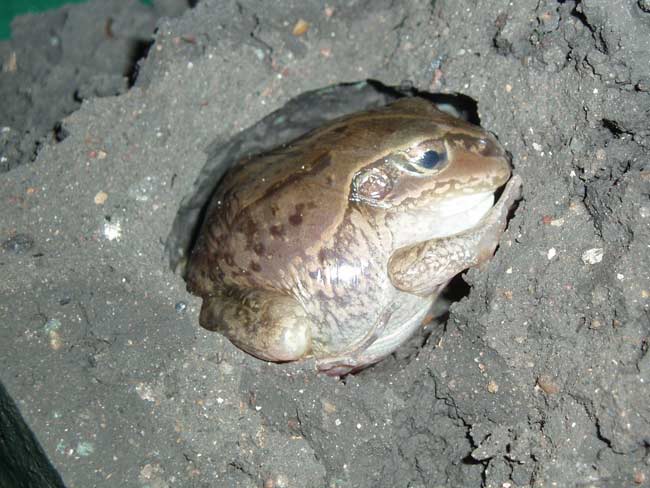Frogs sleep in mud
A cave frog can survive for many years in mud without food and water. New research sheds light on how frogs and other 'dormant' animals can do this.
Many animals go through a period of lethargy to conserve energy when food sources become scarce. This 'energy saving' champion is a cave frog (cyclorama alboguttata).
A team of scientists at the University of Queensland discovered that the metabolism of frog cells completely changes during the "sleep" process, allowing them to make the most of limited energy.
 This cave frog species (Cyclorana alboguttata) maximizes the ability to use energy to survive a lethargic state for months or even years. (Photo: Sara M. Kayes)
This cave frog species (Cyclorana alboguttata) maximizes the ability to use energy to survive a lethargic state for months or even years. (Photo: Sara M. Kayes)
This finding could be used in medicine.
Sara Kayes, she presented her findings at the meeting of the Experimental Biology Society in Glasgow, Scotland Monday, May 29, said: 'This finding will most likely be useful in curing methods. energy-related disorders such as obesity '.
The efficiency of frog cell mitochondria, the tiny 'energy station' of the cell, during 'sleep', is significantly higher than that of normal animals.
This tip, called mitochondrial hook, allows frogs to be particularly effective in using meager energy resources, through increasing the total amount of energy collected per unit of consumption, allowing them to operate 'more economically' than other animals, even if they are not active for a long time.
If there is such an effective energy use when sleeping, why is it not common in the animal world?
Researchers predict that there is a drawback that reactive oxygen production is high, leading to oxidative stress. Because these tiny molecules are thought to cause the most damage during waking up, the mitochondrial hooking does not seem like a good idea for animals that often suddenly wake up during sleep. .
In contrast, cave frogs are thought to sleep deeply during their entire sleep process. In addition, as a cold-blooded animal, they do not need to keep the level of basic heat generation.
- Strange frogs in the world
- Interesting findings: Colorful colors help frogs
- Use algorithms to detect extinct frogs
- Found 14 new species of frogs
- Discovered frogs emit monstrous cries
- Scientists discovered poisonous frogs with glowing bones through the skin
- Will frogs become extinct because of pesticides?
- Can the frog frog freeze survive?
- Scientists discovered frogs that eat all the same meat
- The reason people have to sleep
- Frogs lay the only tadpoles on the planet
- Strangely, Vietnamese frogs suddenly change color when mating
 Animal 'suffering' after hibernation
Animal 'suffering' after hibernation Why do goats climb well?
Why do goats climb well? Scientists were surprised to see chimpanzees eating turtles
Scientists were surprised to see chimpanzees eating turtles Giant catfish died deadly due to drought in Thailand
Giant catfish died deadly due to drought in Thailand